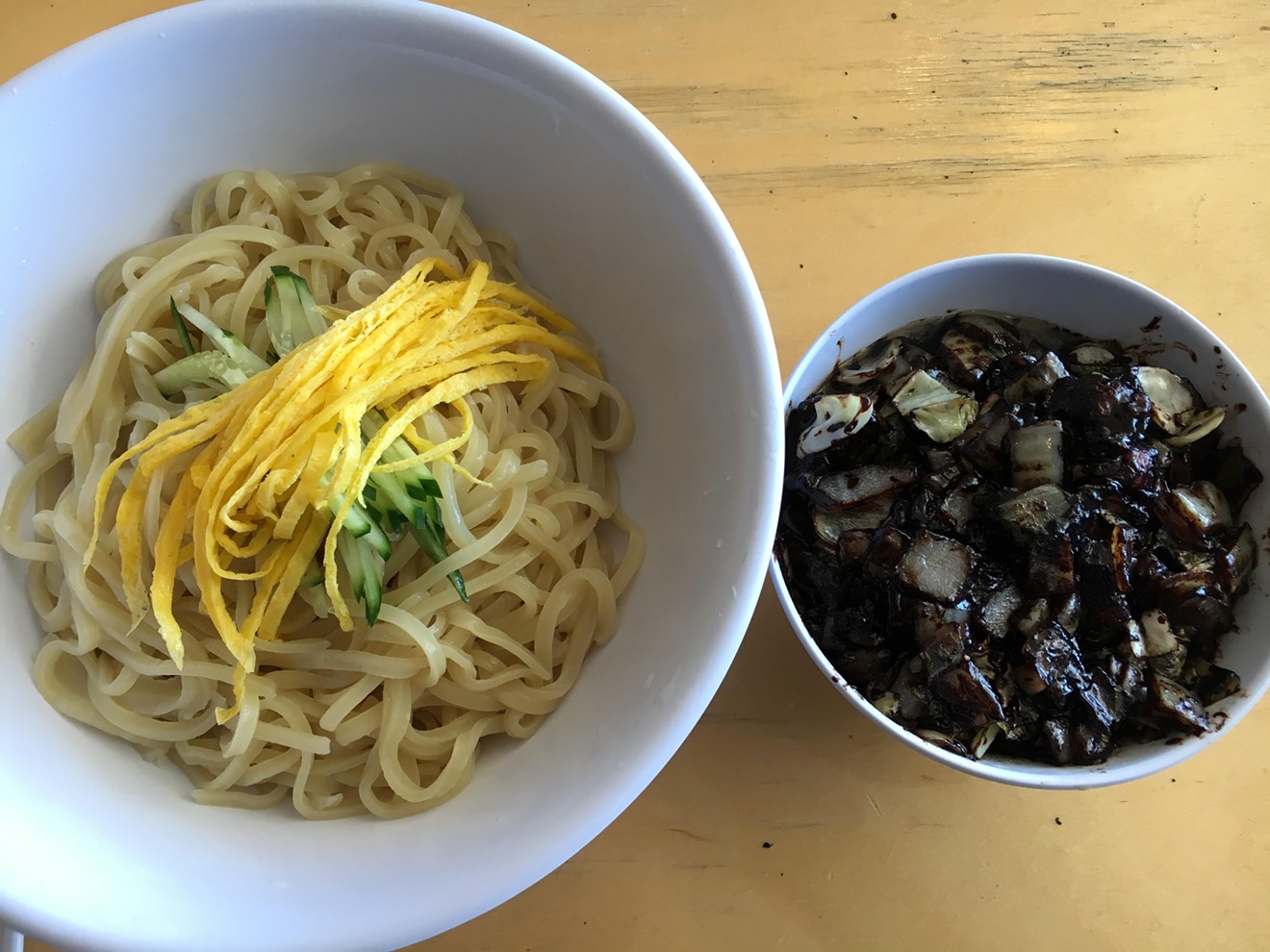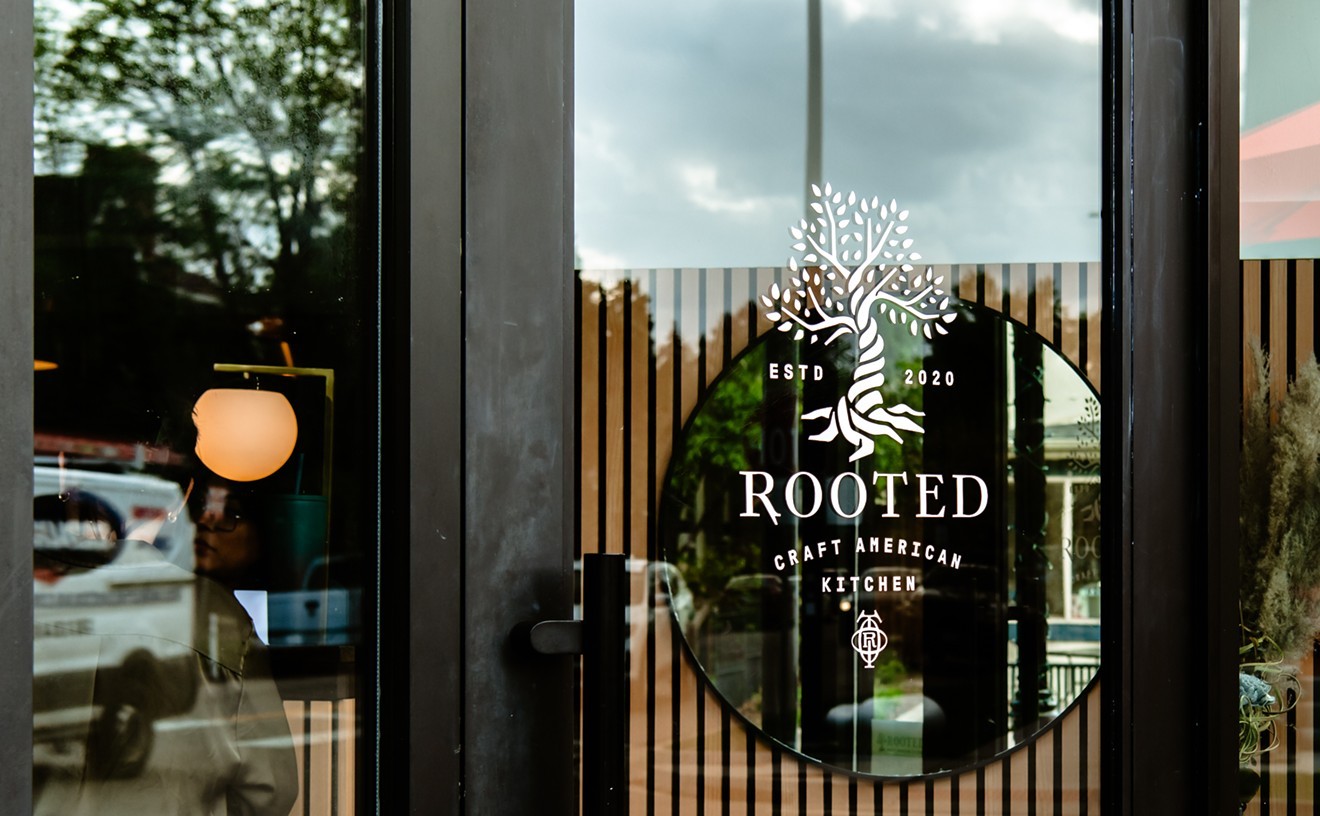As you begin to learn about a certain cuisine, never assume that you know all you need to know about it. I’ve made this mistake myself, becoming alarmed when an order of tonkotsu ramen or Korean fried chicken didn’t come out exactly the way I’d expected. Dishes aren’t immutable, monolithic entities that remain constant from kitchen to kitchen in their place of origin, much less here in Denver; regional cuisines didn’t stop evolving once they hit American shores. Once you’ve tried a certain specialty, if you think all future versions should conform to that initial effort, you risk missing out on some very good food. In countries with many neighbors and shared borders, climates and ingredients, cross-cultural cooking doesn’t mean tradition is being bastardized; it simply means that culinary evolution is happening — sometimes even as we eat.
And it’s happening in pan-Asian eateries all over metro Denver, little strip-mall joints that fill their menus with Chinese, Thai and Japanese options, or that serve Vietnamese pho alongside Singaporean noodles. Westerners often turn up their noses at such places, concluding that nothing in such spots will be very good, or at least won’t be “authentic.” But we have no problem sitting in a neighborhood grill where Dad orders a bratwurst, mom gets a plate of fettuccine Alfredo and the kids share a platter of quesadillas. The American grill has become a hodgepodge of transatlantic cuisine, so why should it bother us if Asian kitchens follow a similar route?
One such example is Hororok Mandarin Noodle House, at 12203 East Iliff Avenue in Aurora. This counter-service spot is tucked between a Chinese restaurant (the always excellent China Jade) and a newish Indian bar and grill (the strip mall also holds a pole-dancing studio and a wig shop). The name Hororok doesn’t appear in English on the building; instead, it’s identified by the logo of a cartoon girl embracing a steaming noodle bowl. If you call in, chances are the clerk will just answer the phone with “Mandarin Noodle House.” But the Korean text on the sign outside and on the menu board above the order counter give an indication of what to expect, even if the word “Mandarin” doesn’t quite fit with our notions of a Korean restaurant.

The Chinese steamed buns have no filling but are light and fluffy all the way through.
Mark Antonation
I’d had jajangmyeon before, at Yong Gung and P & Y Cafe (both also in Aurora), so I knew (more or less) what to expect. The Chinese-Korean dish was created by Chinese migrants who settled in Korea, some of whom opened diner-style restaurants serving affordable meals that eventually became part of the Korean culinary canon. But along with Chinese-Korean specialties, Hororok also serves fried or steamed dumplings and chicken katsu with curry sauce, all of which would be at home at a Japanese ramen house, and Chinese-style steamed buns, egg rolls and stir-fried rice, which could explain the “Mandarin” in the restaurant’s name.
Just out of curiosity, I added an order of steamed buns (hardly a risk, since they come two to a plate for $1.99), which arrived before my jajangmyeon. The buns took the form of twisted knots, not the smooth-topped buns more common in dim sum palaces. Stark white but for embedded flecks of scallion, the buns were impossibly fluffy through and through. These didn’t have a pork filling, but were simple expressions of steamed dough that sopped up the house sauce (a combination of soy sauce and vinegar) like little sponges.
The jajangmyeon, on the other hand, didn’t vary much from the versions I’d tried before: square-cut noodles served with a jet-black sauce loaded with sauteed onions. You can order this dish without meat or with pork, beef or seafood; I got mine with pork. (Neither Yong Gung nor P & Y had offered beef or seafood options.) While I left many of the onion strips in my bowl, I picked through the sauce to fish out every last bite of chewy, caramelized pork. Onions are definitely a big thing with jajangmyeon; at the self-serve condiment station, there’s a tub of diced raw onion that you can use as an accompaniment.

English and Korean descriptions, along with photos of the dishes, help guide customers through the menu board.
Mark Antonation
And at a diner-style, quick-service joint like Mandarin Noodle House, which specializes more in filling bellies than fulfilling notions of what traditional cooking should be, that question is easily answered: Curiosity, an open mind and a hunger to try new things are quickly rewarded with tasty, no-frills food.
Hororok Mandarin Noodle House is located at 12203 East Iliff Avenue in Aurora, with hours of 11 a.m. to 10 p.m. Monday, Tuesday, Wedneday, Friday an Saturday, and noon to 9 p.m. Sunday (closed Thursdays). Call 303-745-4499 for more information or to place an order.














